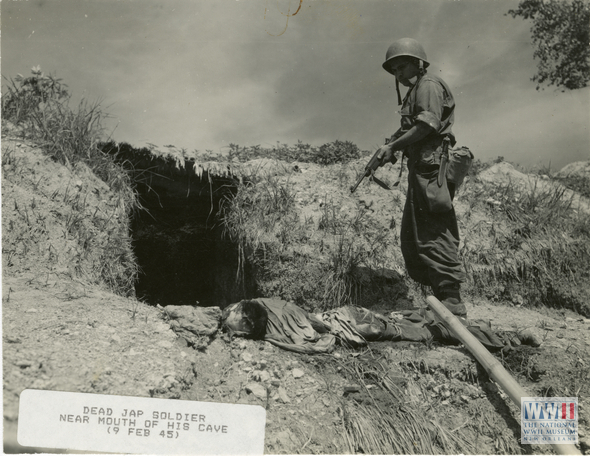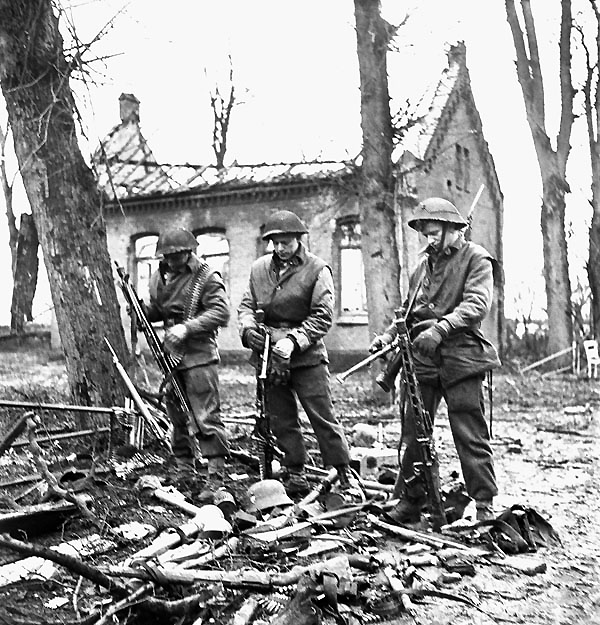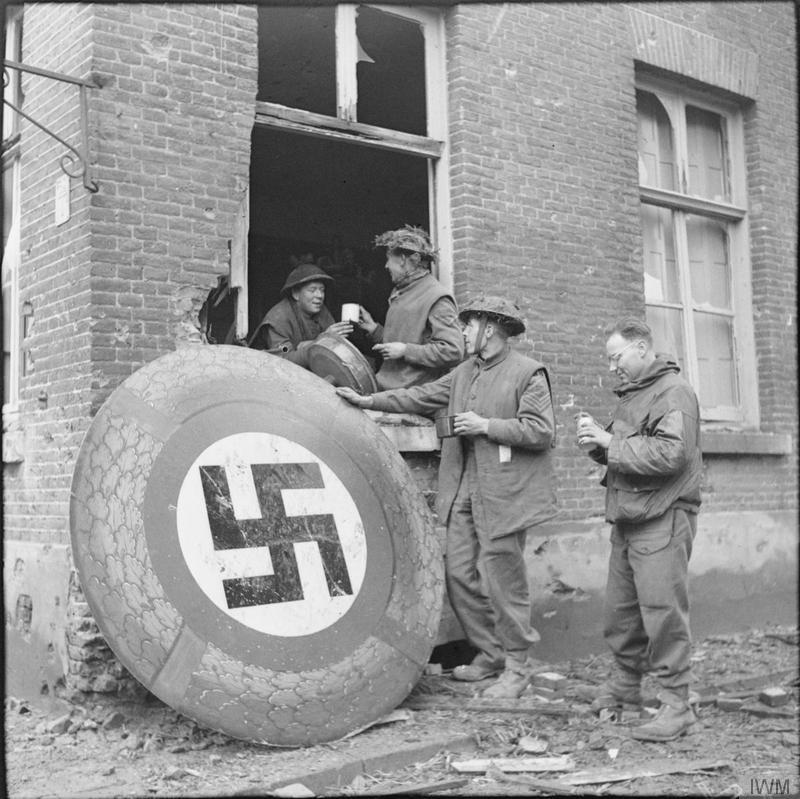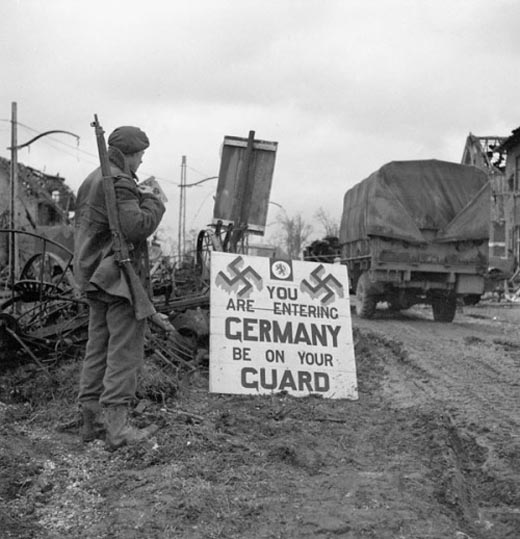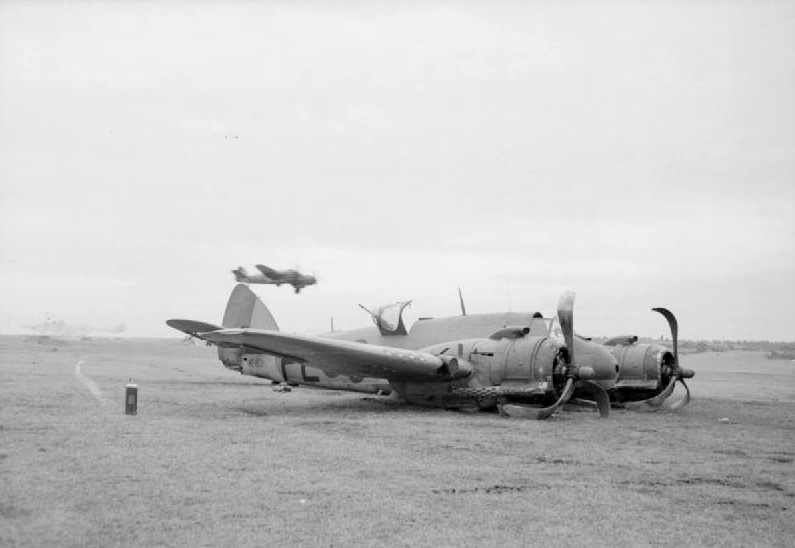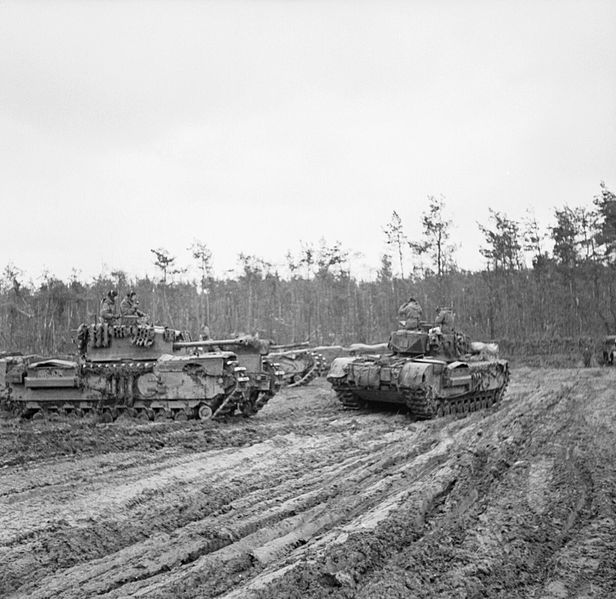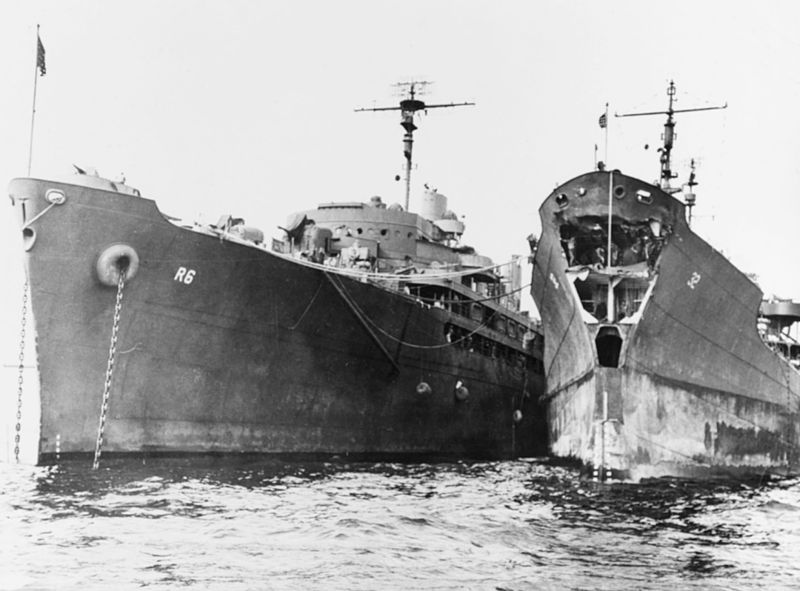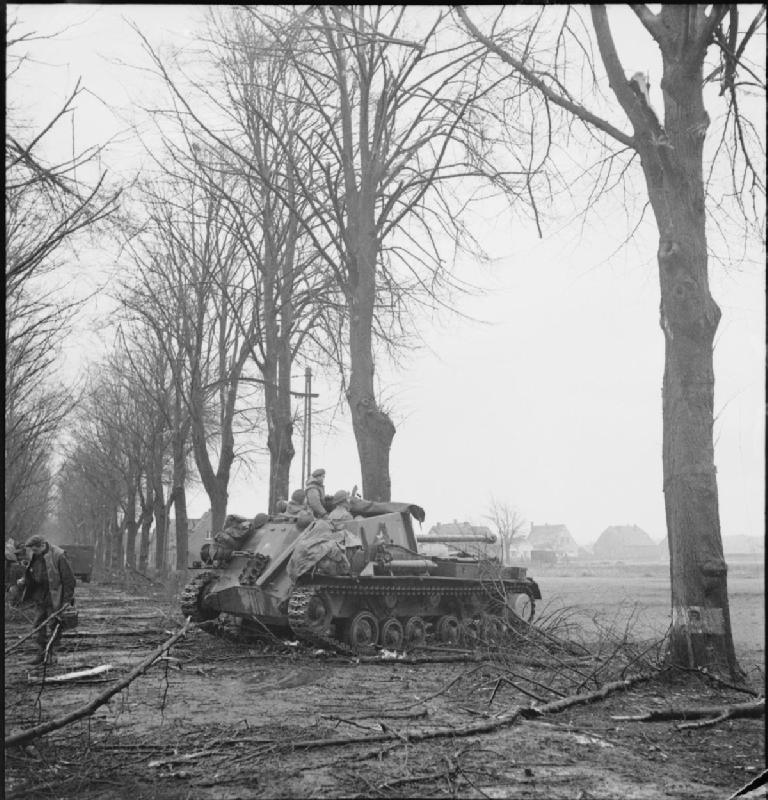Air Operations, CBI
BURMA- 10 10th Air Force B-25s attack bridges at 2 locations.
- 2 B-25s attack numerous road targets of opportunity between Hsipaw and Lashio.
- More than 40 10th Air Force fighter-bombers attack troops, communications targets, and supplies at 7 locations.
- 22 P-47s support Allied ground forces in the Myitson area.
- 9 P-47s attack bridges at 2 locations.
- CACW fighters destroy an estimated 100 Japanese airplanes on the ground at the Tsingtao airfield.
- 8 14th Air Force fighter-bombers attack rail bridges around Lukou and Kiyang.
- 3 fighter-bombers sweep the rail line between Peking and Sinsiang.
- Several fighter-bombers attack the airfield at Sinsiang and rail facilities at Kaifeng.
Air Operations, Carolines
29 B-29s from the 313th Very Heavy Bomb Wing’s 9th Very Heavy Bomb Group attack the Truk Atoll.
[Air Operations, Europe
Halifaxes bomb the Wanne-Eickel oil plant in the Ruhr. B-17s attack the Lützkendorf plant.
RAF BOMBER COMMANDDaylight Ops:
Minor Ops:
- 1 Halifax flies an RCM sortie.
Minor Ops:
- 7 Stirlings fly Resistance operations and 1 Mosquito flies an RCM sortie.
- 1 Stirling is lost.
GERMANY:
- 233 1st Air Division B-17s attack an oil-industry target at Lutzkendorf.
- 147 1st Air Division B-17s attack rail viaducts at Arnsberg and Paderborn.
- 10 2nd Air Division B-24s attack a synthetic-oil plant at Magdeburg (primary).
- 286 2nd Air Division B-24s attak a marshalling yard at Magdeburg (secondary).
- 64 2nd Air Division B-24s attack a rail viaduct at Bielefeld (primary).
- 198 3rd Air Division B-17s attack a munitions plant at Weimar (secondary).
- 107 3rd Air Division B-17s attack an oil-industry target at Dulmen (secondary).
- 173 heavy bombers attack various targets of opportunity.
- 8 heavy bombers are lost and 5 of 809 VIII Fighter Command escorts are lost.
- VIII Fighter Command pilots down 22 Luftwaffe fighters over Germany between 1130 and 1350 hours.
GERMANY:
- 347 9th Air Division bombers attack marshalling yards, rail bridges, and communications centers.
ITALY:
- During the night, XXII TAC A-20s and A-26s attack the dock area a La Spezia, and rail lines, light sources, and signs of movements in the Brenner Pass and Po River valley.
AUSTRIA:
- 54 15th Air Force heavy bombers attack an oil refinery at Moosbierbaum and marshalling yards at Graz and Bruck.
Air Operations, Formosa
During the night, 63rd Heavy Bombt Squadron SB-24s attack several airfields.
[Air Operations, Philippines
- FEAF B-24s attack Corregidor during the morning and afternoon.
- B-24s and V Bomber Command A-20s attack Mariveles and the Bataan Peninsula throughout the day.
- B-25s and V Fighter Command P-51s attack shipping off Luzon and buildings in San Fernando.
- A-20s attack Corregidor.
- USMC SBDs provide close support for US 1st Cavalry Division units near Manila.
- SBDs and P-40s support US 6th Army ground forces in the Balete Pass area.
Air Operations, Volcano Islands
- 22 VII Bomber Command B-24s attack Iwo Jima.
- During the night, 11 VII Bomber Command B-24s conduct snooper raids against Iwo Jima.
- An interim conclusion drawn from analysis of aerial photographs of Iwo Jima indicates that daily bombing attacks since December 8 have not been effective in halting the construction of many new defensive positions, nor even the installation of many new artillery pieces on the island.
Atlantic
While both vessels are submerged, the submarine HMS Venturer sinks U-864 to register the first successful underwater attack.
[Baltic
U-923 is destroyed by hitting a mine in the Baltic Sea.
| Class | Type VIIC/41 |
| CO | Oberleutnant zur See Heinz Frommer |
| Location | Baltic |
| Cause | Mine |
| Casualties | 48 |
| Survivors | None |
Battle of the Atlantic
U-864 is sunk in a submarine attack by the British submarine Venture. It is the second submarine sunk by Venture.
| Class | Type IXD |
| CO | Korvettenkapitän Ralf-Reimar Wolfram |
| Location | Norwegian Sea, W of Bergen |
| Cause | Submarine attack |
| Casualties | 73 |
| Survivors | None |
Burma
The 26th Indian Div, British XV Corps, completes the capture of Ramree Island, in the Arakan sector. In view of the favorable progress of operations in Burma, Adm Mountbatten decides to speed up the arrangements for the offensive against Mandalay and Rangoon. With Burma liberated, the Allies will go on to re-capture Singapore and Malaya.
[Diplomatic Relations
Ecuador and Paraguay(when?) declare war on Germany and Japan.
[Eastern Front
CENTRAL SECTORThorn falls to the 70th Army, barely 3,000 of the 30,000 strong garrison surviving the battle.
[Pacific
Over the next 4 days, the American submarine Batfish (SS-310) sinks 3 Japanese submarines. On this day I-41 is sunk in the Philippine Islands area.
[Philippines
On Luzon Japanese resistance stiffens in Manila south of the Pasig River. In the I Corps sector units of the US 32nd Div repel Japanese night counterattacks on the Villa Verde track and go on to attack the enemy, but are held up by accurate artillery fire. In the XI Corps sector, the 38th Div makes progress in the Zigzag Pass rea. The 11th Airborne Div, 8th Army, meets strong opposition at Nichols airfield.
As well as the fighting in Manila there is an attack by 11th Airborne Div southeast of the city near Nichols and Nielson Fields.
[Western Front
The British XXX Corps, Canadian 1st Army, continues to advance rapidly, taking Mehr, Niel and Millingen, by the Canadian 3rd Div, overrunning the defenses of the Siegfried Line near Nütterden, which is occupied, and taking the heights near Materborn, by the 15th (Scottish) Div, and sending some units as far as Cleve.
In the Cleve sector the Germans begin a counteroffensive with the arrival of the units of the 6th Parachute Div and the XLVII Panzer Corps, the first to consolidate the line together with the 7th Parachute Div, the second to form an armored reserve in the area and to re-take Materborn.
In the US 1st Army sector, the 9th Div, V Corps, carries out the final assault on the Schwammenauel Dam, securing a large part of Hasenfelde and seizing the north bank of Lake Urft. In the center of the line the units of the VIII Corps, US 3rd Army, take Neuendorf, by the 87th Div, and make substantial progress through the fortifications of the Siegfried Line, while the formations of the III Corps extend and consolidate the bridgehead east of the Our. In the XII Corps sector, too, the bridgeheads over the Our and the Sauer are further strengthened and widened by the forces of the 5th and 80th Divs.
On the Allied right flank, the French 1st Army completes the elimination of the Colmar pocket. The French I Corps liquidates the last German bridgeheads west of the Rhine in the Chalampé sector. The west bank of the Rhine south of Strasbourg is completely liberated; the battered units of the German 19th Army have been withdrawn across the river, where they dig in for the final battle. The operation in this sector has cost the French and Americans 18,000 casualties, killed, wounded and missing, against German losses of double that number.
[Images from February 9, 1945
|
|
|
|
|
|
|
|
